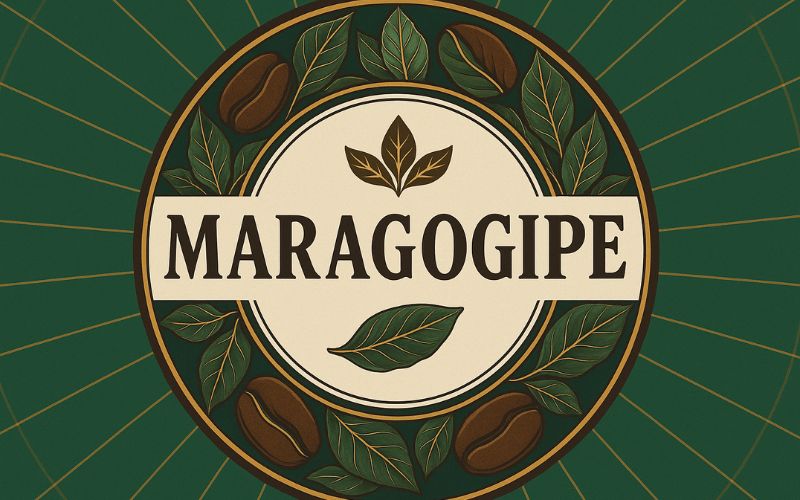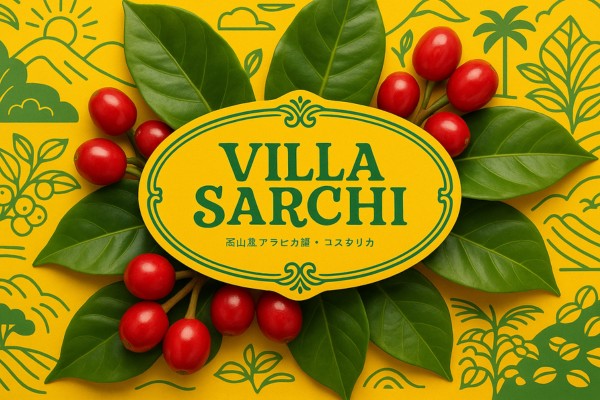
Maragogipe: The Gentle Giant of the Coffee World
Meet Maragogipe (or Maragogype), the famous 'Elephant Bean' coffee. Learn how this natural mutation of Typica was discovered in Brazil, why its beans are so unusually large, and what to expect from its often delicate and nuanced cup profile.
Maragogipe: The Surprising "Elephant Bean"
In the world of coffee varieties, Maragogipe (pronounced ma-ra-go-HEE-pay) is a true curiosity, instantly recognizable for one defining characteristic: its exceptionally large beans. Often nicknamed "Elephant Beans," these beans can be up to twice the size of a typical Arabica bean.
Maragogipe is not a man-made hybrid but a natural mutation of the Typica variety. This genetic quirk results not only in large beans but also in a tall, lanky plant with large leaves and long internodes between branches, making it look like a "giant" version of a normal coffee plant.
While its size is its most obvious trait, its flavor profile is often one of surprising delicacy and nuance, though it can be notoriously inconsistent.
Discovery in Brazil
The Maragogipe variety was first discovered in 1870 in the state of Bahia, Brazil, near the town of Maragogipe, from which it gets its name. It was found growing in a field of Typica coffee plants.
Farmers and botanists were immediately struck by the plant's large stature and massive cherries. It was quickly recognized as a stable, natural mutation of Typica. From Brazil, it was distributed to other coffee-growing countries in Central and South America.
Its unique appearance made it a curiosity and a novelty, and for a time, it was widely planted. However, its agricultural challenges soon became apparent.
The Challenge of Large Beans
The large size of Maragogipe beans presents unique challenges both in cultivation and in roasting.
- Porous Beans: The beans have a lower density and are more porous than smaller, more compact beans. This means they absorb and lose heat differently during the roasting process.
- Roasting Difficulty: Roasters must be very careful with Maragogipe beans. Their porous structure can lead to tipping (scorching on the ends of the bean) or uneven roasting if the heat is applied too aggressively. A slower, more gentle roast profile is often required to develop the flavors properly.
- Low Yield: The plants are very low-yielding, producing significantly fewer cherries than even their parent, Typica. This, combined with their susceptibility to disease, makes them a risky and often unprofitable crop for farmers.
Because of these difficulties, Maragogipe has become increasingly rare. It is most often grown by farmers who are dedicated to preserving unique varieties and who have a direct link to specialty roasters willing to pay a premium for it.
What to Expect in the Cup
The flavor profile of Maragogipe can be quite variable and is heavily influenced by the terroir in which it is grown. Because the plant takes so much of its character from the soil, a Maragogipe from Mexico can taste vastly different from one grown in Nicaragua.
When it is well-grown and well-roasted, however, it can produce a cup of exceptional quality.
- Acidity: Often bright and citric, with notes of lemon, orange, and green apple.
- Body: Typically light to medium-bodied, with a smooth, clean mouthfeel, similar to its Typica parent.
- Aroma: Can be quite floral and complex, with hints of jasmine, rose, and spice.
- Flavor: Look for delicate and nuanced flavors. It often presents a good balance of fruit, floral, and nutty notes. Common descriptors include tea-rose, honey, and a mild, pleasant woodiness.
The general consensus is that Maragogipe tends to amplify the characteristics of the terroir it's grown in, for better or for worse.
Key Growing Regions
While it has fallen out of favor in many areas, some regions are still known for producing excellent Maragogipe.
- Mexico: The regions of Chiapas and Oaxaca are particularly well-known for their high-quality Maragogipe, which often exhibits a bright, clean acidity and nutty notes.
- Nicaragua: Nicaragua is another key producer, with its Maragogipe often displaying a fruitier and more complex profile.
- Guatemala: Here, the variety can produce a very balanced cup with a good combination of body and acidity.
A Gentle Approach to Brewing
To get the best from this delicate giant, brewing methods that favor clarity and nuance are recommended.
- Recommended Methods: Pour-over methods are an excellent choice. A V60 can highlight its bright acidity, while a Chemex will emphasize its clean, tea-like qualities.
- Grind: A standard medium-fine grind for pour-over is a good starting point.
- Water: Given its porous nature, it can be sensitive to water chemistry and temperature. Using filtered water and a temperature around 94°C (201°F) is a good practice.
A Famous Offspring: Pacamara
Perhaps Maragogipe's most important contribution to the coffee world is its role as a parent to the Pacamara variety.
In 1958, the Salvadoran Institute for Coffee Research (ISIC) crossed Maragogipe with Pacas (a Bourbon mutation) to create Pacamara. This variety combines the large bean size of Maragogipe with the compact stature and higher productivity of Pacas, resulting in a coffee that is both unique and more agronomically viable.
Conclusion: A Gentle Giant Worth Seeking Out
Maragogipe is a fascinating chapter in the story of coffee. It is a perfect example of the surprising genetic diversity that can arise naturally within a single variety.
While its low yields and roasting challenges have made it a rarity, it remains a favorite among coffee connoisseurs who appreciate its potential for a uniquely delicate and aromatic cup. Seeking out and trying a Maragogipe coffee is a chance to taste a truly unique piece of coffee's genetic history.


